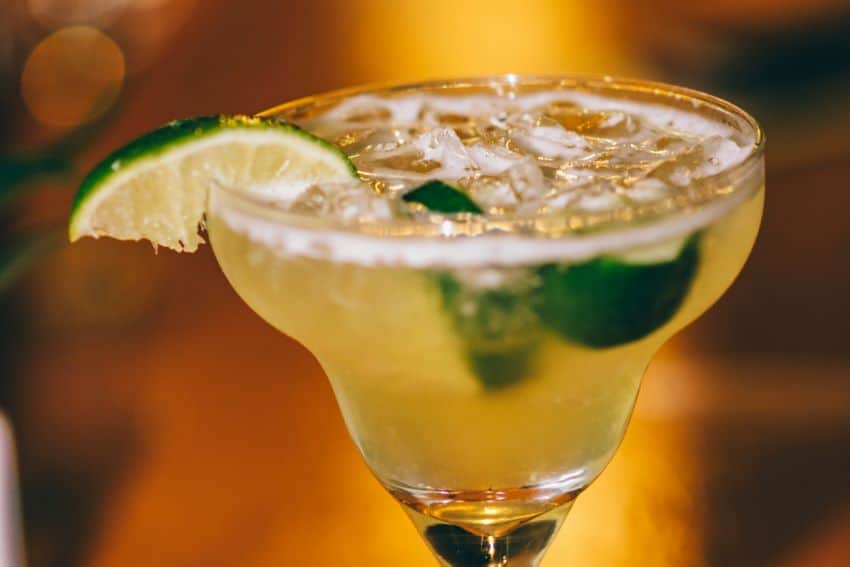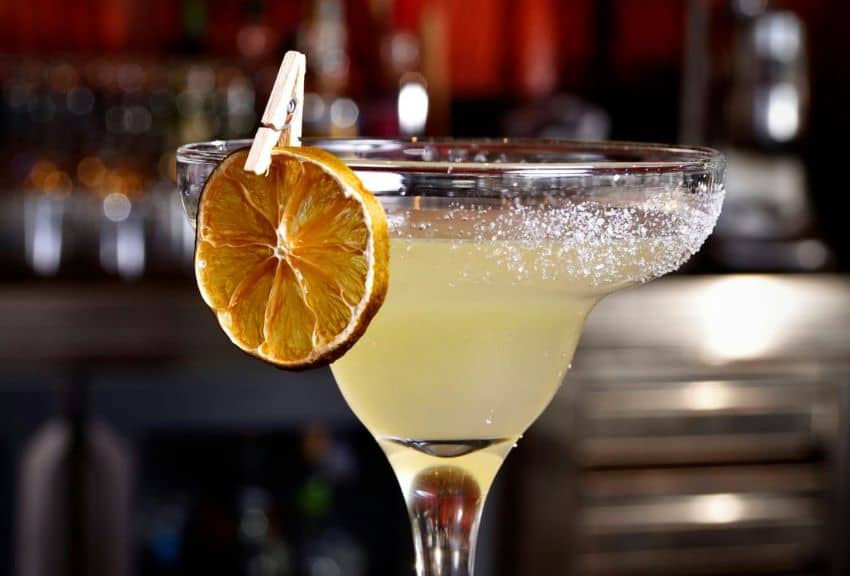Baja California’s secret ingredient for the perfect margarita

The Baja California peninsula has made some pretty invaluable contributions to modern life. Where would we be, after all, without margaritas and fish tacos? Caesar salad is pretty great, too, especially when it’s made fresh tableside. Sure, there are some disputed stories in the history of these cultural and culinary touchstones — fish and tortillas have a pretty long history in Mexico, for example. But there’s not much doubt that the modern-style fish taco was invented in Rosarito or Ensenada, the Caesar salad in Tijuana, and the margarita in the environs of one of those three communities, most likely during the 1930s or 1940s.
Where does Baja California Sur, the peninsula’s southern state, figure in all this food and beverage lore? Its residents have made some important contributions, too. Damiana may not be as famous as the margarita, but something special happens when you complement the cocktail with this ancestral regional liqueur. Just as the peninsula seamlessly transitions from north to south somewhere around Guerrero Negro, the margarita seamlessly transforms from good to great with the simple addition of this singular ingredient. Bartenders in Los Cabos have been making margaritas this way for decades, with memorable results.
The unusual history of damiana
If you know anything about damiana, you probably know it’s famous as an aphrodisiac. Does it work? The Guaycura the indigenous inhabitants of much of what is now Baja California Sur, certainly thought so. The Pericú, another culturally extinct indigenous group, roamed the equivalent of modern-day Los Cabos, while the Guaycura peoples occupied the area from Todos Santos to Loreto, until waves of Jesuit, Franciscan, and Dominican missionaries showed up, and along with Spanish soldiers, ended their way of life.
The Guaycura are credited with first making damiana liqueur from the plant of the same name, a shrub with pretty yellow wildflowers that still grows pretty freely around these parts. Its scientific name is Turnera diffusa and it does seem to have some notable medicinal qualities. Its efficacy is still being studied by scientists, not only concerning its reputed sexual enhancement but also as a potential inhibitor of obesity and depression. The Guaycura thought it had medicinal uses, too, and as far as we know, they were never depressed. Oppressed, yes, but that’s another story.
Antonio Ruffo Santa Cruz, of the distinguished Ruffo family in La Paz, Baja California Sur’s capital city, was the first to market the liqueur the Guaycura had created back in the 1860s, at his historic La Perla de La Paz department store. Nowadays, it’s sold throughout the state, and is a popularly stocked souvenir item; particularly the brand Guaycura Licor de Damiana, which features a bottle shaped like a female fertility figure. Many traditional-minded residents still make it at home, too, using a tried and true recipe whose ingredients include leaves from the damiana flower, honey, sugar, vodka, and water (easy on the water).
The Baja bonafides of the margarita
Now that the margarita has ascended to ubiquitous status as the world’s most popular cocktail, in case you didn’t know, a lot more people will try to claim it as their own. Plenty have already tried, including a few in Alta California. However, it bears noting that when Danny Herrera died at age 90 in 1992, the Los Angeles Times endorsed him, not any U.S.-born claimants, as the true inventor of the margarita.

Herrera owned Rancho La Gloria, between Tijuana and Rosarito, and had to think fast one night in the 1940s when a showgirl named Marjorie King, who was allergic to every liquor save tequila, visited the bar. His solution was a creative piece of mixology called the margarita, or so the story goes.
The Ensenada Historical Society backs another claim, this one on behalf of Don Carlos Orozco, a bartender at the legendary Ensenada institution, Hussong’s Cantina. According to this version, Orozco created the drink in 1941 for Margarita Henkel, whose father was the German ambassador to México.
Of course, there could be a simpler explanation. Did you know, for instance, that the tequila daisy — the forerunner to the modern margarita — was created in Tijuana during the latter days of Prohibition, when booze was against the law on the other side of the border? Or that the Spanish word for daisy just happens to be margarita?
How to take your margarita from good to great, Los Cabos style
Baja’s boozy treasures work best in tandem. Adding the honeyed herbal liqueur of damiana to the margarita, for instance, gives the tequila-based cocktail another layer of complexity and flavor. Nowhere has this fact been more eagerly recognized than in Los Cabos, where damiana margaritas are almost as common as sunburns and souvenir t-shirts.
Naturally, not everyone agrees on the correct recipe. At Cabo Wabo, a long-time day and nightlife mecca in Cabo San Lucas, they make their damiana margaritas with Cabo Wabo tequila, damiana, and Controy (the Mexican version of Cointreau), plus fresh lime juice and a splash of blue Curaçao. Which is tasty, but not quite aphrodisiacal and paradisical (try saying that after you’ve had two).
However, at Los Tres Gallos, a traditional Mexican culinary oasis named for an iconic trio of actors (Pedro Infante, Jorge Negrete, and Javier Solís), their bar staff at both the Cabo San Lucas and San José del Cabo locations opts for a different approach. Clase Azul Reposado is paired with Controy and Jarabe Natural, given a fresh squeeze of orange and lime, and topped with a floater of damiana. Which is perfect. At least, that’s what this damiana-loving local thinks.
But you should probably decide for yourself.
Chris Sands is the Cabo San Lucas local expert for the USA Today travel website 10 Best, writer of Fodor’s Los Cabos travel guidebook, and a contributor to numerous websites and publications, including Tasting Table, Marriott Bonvoy Traveler, Forbes Travel Guide, Porthole Cruise, Cabo Living and Mexico News Daily. His specialty is travel-related content and lifestyle features focused on food, wine and golf.
Source: Mexico News Daily

